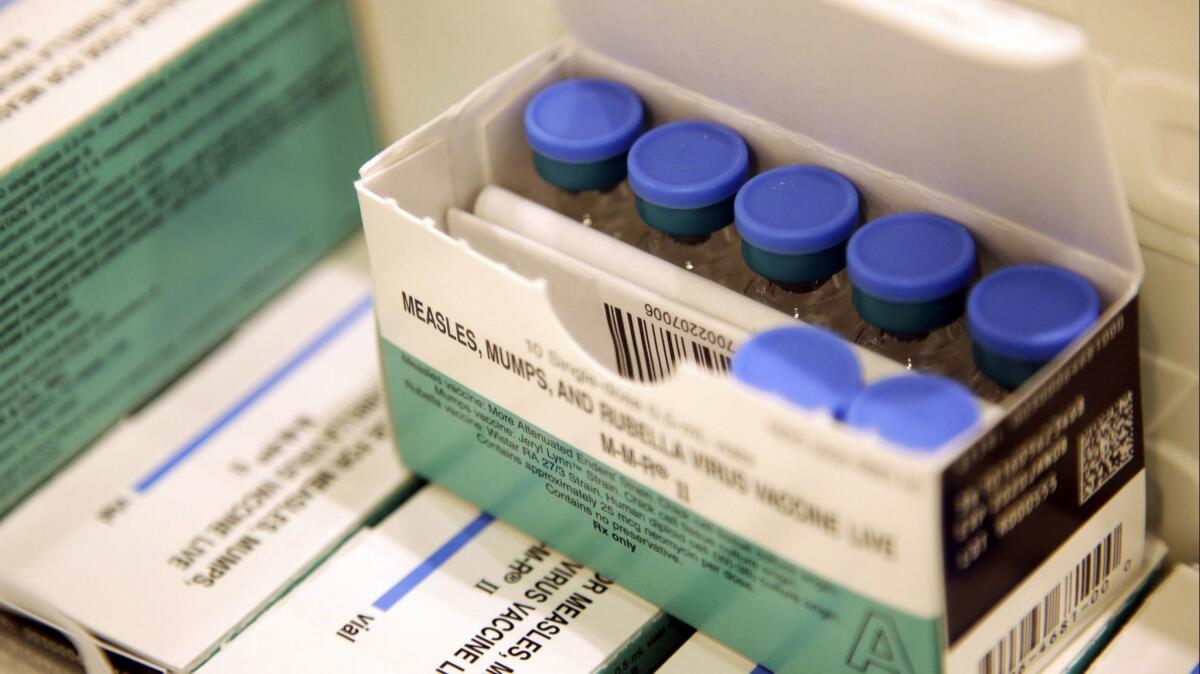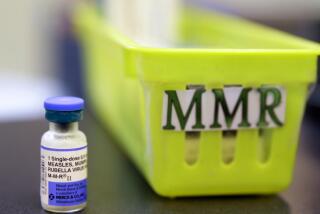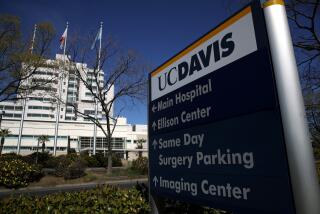Anxious to slow measles’ spread, California officials turn to quarantines

With the number of measles cases in California and across the nation continuing to rise, officials are taking more serious action.
Two Southern California colleges are turning to quarantines. Meanwhile, health officials are urging vaccinations.
The number of measles cases has been soaring nationwide this year, with 695 cases in 22 states reported so far, the most in the U.S. since 2000.
Here is the latest:
Where is the quarantine?
Health officials announced Thursday that more than 200 students and staff members at UCLA and Cal State Los Angeles who have been exposed to measles are being told to stay home.
The five people diagnosed with measles in L.A. County so this year include a student from each of the schools. Concerned that the disease could spread quickly on busy college campuses, health officials ordered that students and staff exposed to measles who cannot show they have been vaccinated be quarantined until further notice.
County health workers reached out to more than 500 students and faculty members who may have come into contact with the infected UCLA student in early April. As of Thursday afternoon, 79 of those had not provided medical records showing they had been immunized, the university said.
RELATED: Understanding measles »
At Cal State L.A., 156 library employees — both students and staff — who may have been around the infected student earlier this month, have not been able to provide their immunization records, the university said.
As of 5 p.m. Thursday, 235 people at both schools were still facing quarantine orders, according to county health officials.
Officials said they would lift the orders for people as soon as they showed they had immunity. Otherwise, the quarantine could last until April 30 at UCLA and May 2 at Cal State L.A..
“I know there is concern about measles, particularly among the very small percentage of our community who have not been vaccinated,” UCLA Chancellor Gene Block said in a statement. “Please be assured that we have the resources we need for prevention and treatment, and that we are working very closely with local public health officials.”
Cal State L.A. officials said they told those exposed to the disease to stay home. UCLA officials did not respond to questions about how they would handle quarantined students who live in close quarters in dormitories, but in a statement, they said such students would “be cared for at UCLA while they are quarantined.”
What is the status of the measles spread in California?
California health officials announced Thursday that 38 people have been infected with measles in the state this year, a tally expected to rise in the coming weeks as outbreaks grow.
In California, the measles count jumped by 15 cases in a week, said Dr. Karen Smith, director of the state Department of Public Health. Health. Officials have declared new outbreaks in Sacramento and Los Angeles over the last few days.
Overall, California’s high vaccination rates seem to have prevented small outbreaks from mushrooming the way they have elsewhere, experts say. California’s largest outbreak, in Butte County, has spread to 16 people. By contrast, an outbreak in New York City has infected more than 320.
Still, pockets of unvaccinated people in California are susceptible, experts say. When a traveler contracts measles abroad and brings it back to the U.S., the disease can spread among groups who aren’t immunized.
What do we know about those who have measles?
Fourteen of the 38 people with measles in California caught the illness while visiting other countries, including Thailand, the Philippines, Vietnam and Cambodia, Smith said. Four of those people infected 22 other people in the state, likely living in areas with lower-than-average vaccination rates.
Three-quarters of the measles patients in California were not vaccinated at all or had only one of the two recommended doses of the measles vaccine, said Dr. Gil Chavez, deputy director of the state health department’s infectious disease center.
The vaccine is believed to provide lifetime protection and officials recommend it to anyone who has not been immunized yet.
While the shot is estimated to be 97% effective, Chavez said, ”even in the best of cases, 3% of people who are immunized are not fully protected.”
Still, people who contract measles even after getting the shot tend to have a less severe form of the illness and are less likely to transmit it to others.
Measles patients in California ranged in age from 5 months to 55 years, Smith said. Some have been hospitalized, she said.
Though measles is most dangerous to babies under a year old, children younger than 5 and adults older than 20 are more likely to suffer from other serious complications, such as pneumonia, brain swelling and ear infections that can lead to permanent hearing loss.
“Contrary to what some people think, measles is not a benign childhood disease,” Smith said.
What are the symptoms of measles?
The signs of measles are a lot like cold symptoms, including fever and cough. They usually start about two weeks after exposure. But measles patients also get a characteristic red rash that typically begins on the face and spreads downward toward the feet.
If you have a rash, don’t go to the emergency room or urgent care. Call your doctor’s office first so they can make special arrangements for your visit so you don’t infect anyone else.
More to Read
Sign up for Essential California
The most important California stories and recommendations in your inbox every morning.
You may occasionally receive promotional content from the Los Angeles Times.










